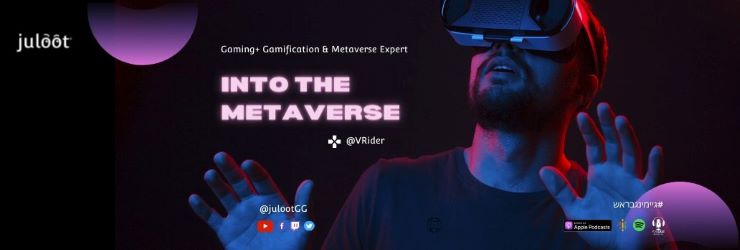draxtordespres new machinima work and talent re-define the term journalism. Watch Draxtor Despres attending lectures on peace efforts and interviewed researchers in the field of conflict resolution, even went out into the physical realm to find answers about how to engage in more fruitful debates that have real world impact, following Israel's Gaza offensive in December 2008.
Gaza protest in Second Life: Conflict resolution in virtual worlds?
draxtordespres new machinima work and talent re-define the term journalism. Watch Draxtor Despres attending lectures on peace efforts and interviewed researchers in the field of conflict resolution, even went out into the physical realm to find answers about how to engage in more fruitful debates that have real world impact, following Israel's Gaza offensive in December 2008.
E.Magiciens Game Contest open to Israeli Students!
 This year the ENJMIN (Graduate School of Games and Interactive Media) is in charge of the competition related to video games. Located in Angoulême in the south-west of
This year the ENJMIN (Graduate School of Games and Interactive Media) is in charge of the competition related to video games. Located in Angoulême in the south-west of
Link: http://english.enjmin.fr/
Information :
For any question about the game contest contact Pr. Stephane Natkin:
stephane.natkin[AT]cnam[DOT]fr
What is the Israeli-Franch connection here?
The good news is that I've contacted Pr. Stephane Natkin.
Participation is is open to Israeli Students too! Game On!
Dr. Hanan Gazit
Les E.magiciens Festival 2008 appears on DiGRA ISRAEL Calendar: Web3D, VideoGames, Virtual Worlds, New Media: Conferences, Seminars, Workshops, Meetings, Exhibitions & Events-All coming your way in one place by DiGRA
Real World Event (in Blue) | Calls & Submissions Deadlines (in Red)| Virtual World/ Cybernet Event (in Purple).
Please email details to: info(AT)digraisrael(DOT)org, at least three weeks prior to the event. DiGRA
Link: http://www.digra-il.org/calendar
Machinima: A New Narrative Medium for the Y-[tube] Generation
One of my friends on facebook, Paul 'Fire' Preibisch, shared this funny WOW machinima "a group of dragon slayers seek out a new way to spend their time on" on www.wegame.com, an innovative media sharing platform for gamers.

This presentation focuses on game-based movie-making of the Y-[tube] generation (children 13-17 years of ages and adults 18-28 years of age). Machinima is movie-making by using virtual worlds and videogames engines, which has gained popularity among players (Cefrey, 2008). The Machinima makers demonstrate a higher level of active participation compared to the majority of Bonk’s (2008) YouTube survey participants, preferring passive observation rather than creating their own YouTube videos.
Developments in 3D real time game engines, Massive Multiplayer On-line Role Playing Games (MMORPGs) platforms, high-band communications, and the emergence of game-based movie-makers communities, have paved the way to the extensive application of the Mashinima medium. Lowood (2008) suggests that players are learning to use game-based movie-making in order to express ideas and opinions important in their lives, ranging from politics and conflicts of real life to those of virtual worlds and game communities. Creating Machinima movies requires, apart from film making skills, the ability to convey new meaning by collaborating with other actors on the scene, similar to regular movie-making (Hancock & Inqram, 2007). Moreover, hacking the game engine in order to create a “game mood”, a new game space and objects, requires programming skills. I argue that the new Machinima medium affords a new kind of literacy, which is a combination of cognitive, communication, artistic and visual skills. Moreover, there are commercial implications as the MTV's virtual world's music video competition shows (Sherman, 2007). Bardzell et al., (2006) classified Machinima to four types according to the platforms used: Pure Machinima platforms, Hybrid Games, Pure Games and Modded Games.
Some of the cultural themes reflected in the Machinima created inside massively multiplayer on-line games (MMOGs), such as World of World Craft, RuneScape, Habbo Hotel, and virtual worlds, such as Second Life, will be presented. From MTV’s music Mashinima mock ups, to original self expression stories. For example, the Machinima “make love not war” on Blizzard's World of Warcraft, represents in a funny and creative way the cultural gap between the children's world and the adult’s world. The ability to use ones imagination and see and experience from many different vantage points in MMORPGs, provides a new set of tools for imaginative and innovative thinking (Thomas & Brown, 2007). The Israeli Machinima “Status Quo” made by Nir Matarasso and Gur Bentwich on the Unreal1 engine, is an example of the creative expression of their political views which highlights the absurdity of the Israeli-Palestine Conflict.
To conclude, I argue that the Machinima is a new narrative medium in which players develop a new kind of literacy and that this new medium deserves systematic examination for assessing its full cultural and cognitive implications.
References
Bardzell, J., Bardzell, S., Briggs, C., Makice, K., Ryan, W., Weldon, M., (2006). Machinima Prototyping: An Approach to Evaluation. Proceedings of the 4th Nordic Conference on Human-computer interaction: changing roles, vol. 189, (pp. 433-436), Oslo, Norway.
Cefrey, H. (2008). Career Building Through Machinima: Using Video Games to Make Movies. Rosen Publishing Group.
Ellis, G. J. (1983). Youth in the electronic environment: An introduction. Youth and report for the NSF of workshops. The impact of three dimensional immersive VE on modern pedagogy.
Gazit, E. (in press). A window on digital games interactions in home settings. Handbook of Research on Effective Electronic Gaming in Education. IGI Global Press.
Lowood, H. (2008). Found Technology: Players as Innovators in the Making of Machinima.
McPherson. T. (ED.) Digital Youth, Innovation, and the Unexpected. (pp. 165-196). The John D. and Catherine T.MacArthur Foundation Series on Digital Media and Learning. Cambridge, MA: The MIT Press.
http://www.virtualworldsnews.com/2007/10/mtv-and-metacaf.html (Retrived 18 April 2008).
Thomas, D., & Brown, J. S. (2007). The Play of Imagination: Extending the Literary Mind, Games and Culture, 2, 149-172.
====
I wish to thank DiGRA ISRAEL members Nir Miretzky and Jacqui Basil for their thoughtful comments.





